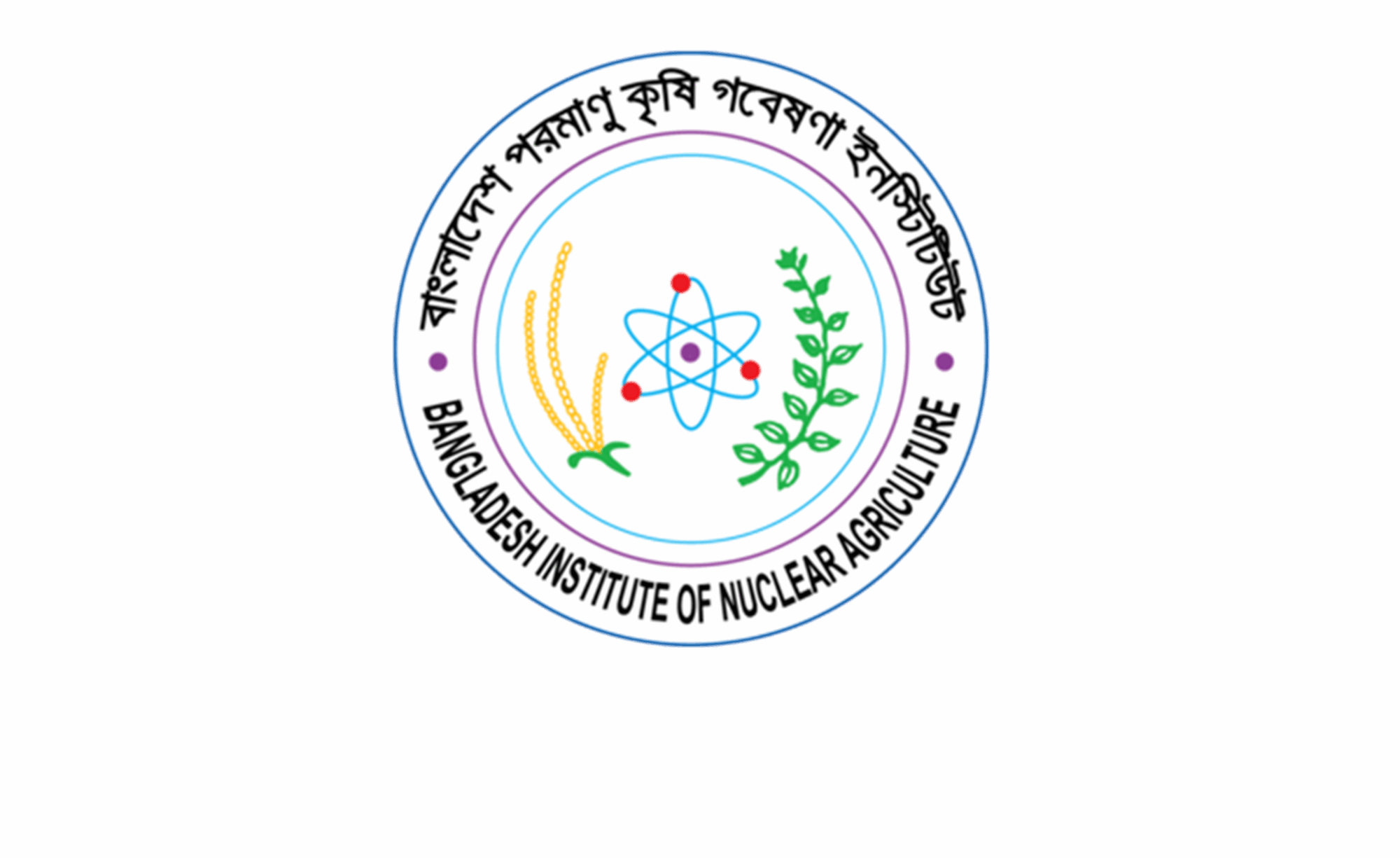In 2024, the Bangladesh Institute of Nuclear Agriculture (BINA) demonstrated significant research productivity with 20 publications indexed in the Web of Science. The majority (80%) were standard research articles, while review articles and data papers comprised the remainder. Most works (70%) were indexed in the Science Citation Index Expanded (SCI-EXPANDED), indicating a strong presence in core scientific literature, and the rest were in the Emerging Sources Citation Index (ESCI). Subject-wise, the research leaned heavily toward Plant Sciences (30%), with notable representation from Agriculture, Multidisciplinary, and Agronomy. All publications involved Bangladeshi affiliation, but international collaboration was evident, particularly with the USA, Japan, Germany, and several other countries. Elsevier emerged as the leading publisher (45%), followed by Springer Nature and others. A diverse group of researchers contributed, with several individuals authoring multiple papers, indicating a collaborative and productive research environment at BINA. Web of Science
The areas of research publication categories in the TreeMap:
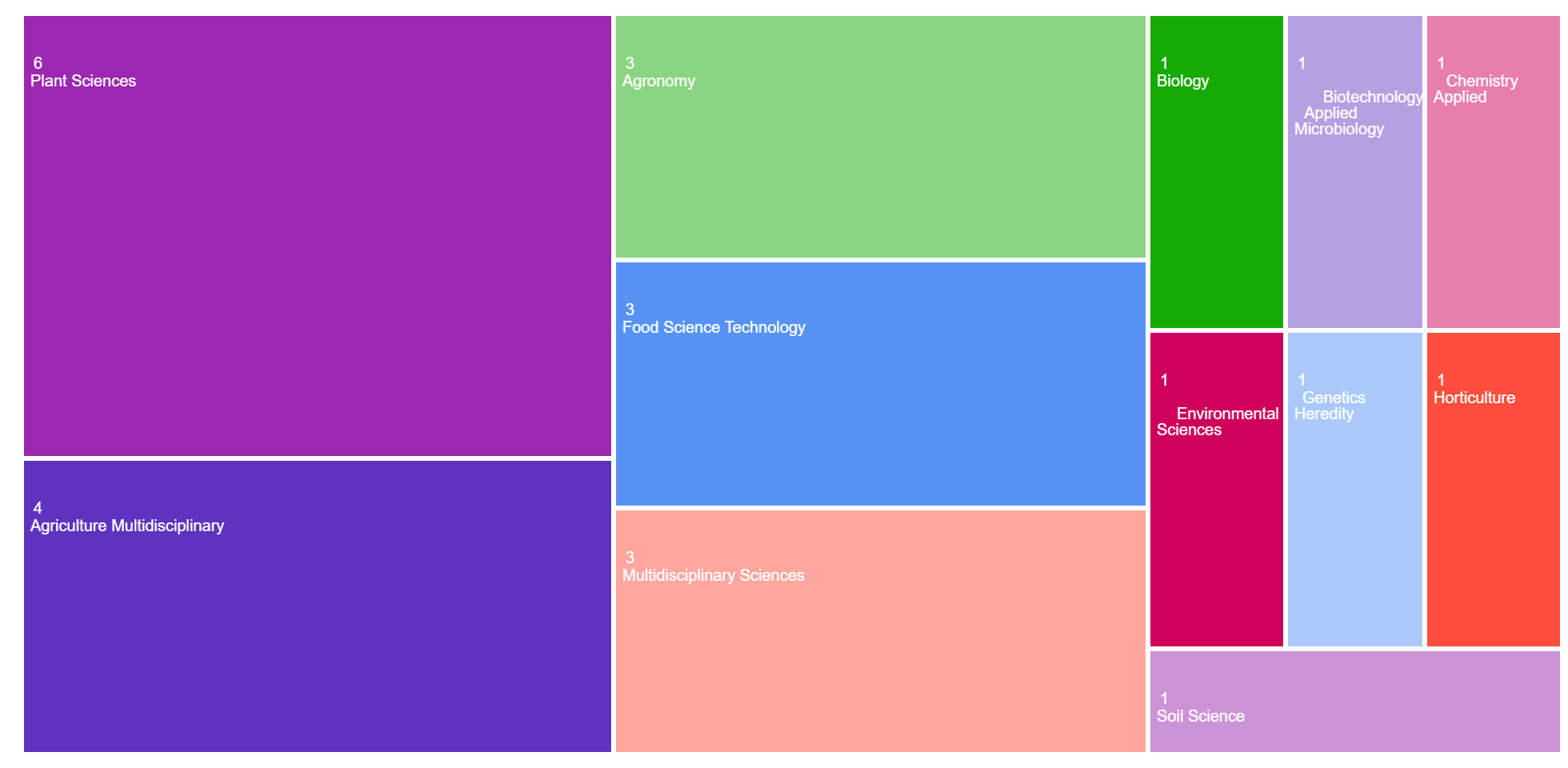
Contributions in the field include:
| Categories | Record Count | % of 20 |
|---|---|---|
| Plant Sciences | 6 | 30.000% |
| Agriculture Multidisciplinary | 4 | 20.000% |
| Agronomy | 3 | 15.000% |
| Food Science Technology | 3 | 15.000% |
| Multidisciplinary Sciences | 3 | 15.000% |
| Biology | 1 | 5.000% |
| Biotechnology Applied Microbiology | 1 | 5.000% |
| Chemistry Applied | 1 | 5.000% |
| Environmental Sciences | 1 | 5.000% |
| Genetics Heredity | 1 | 5.000% |
| Horticulture | 1 | 5.000% |
| Soil Science | 1 | 5.000% |
Research areas:
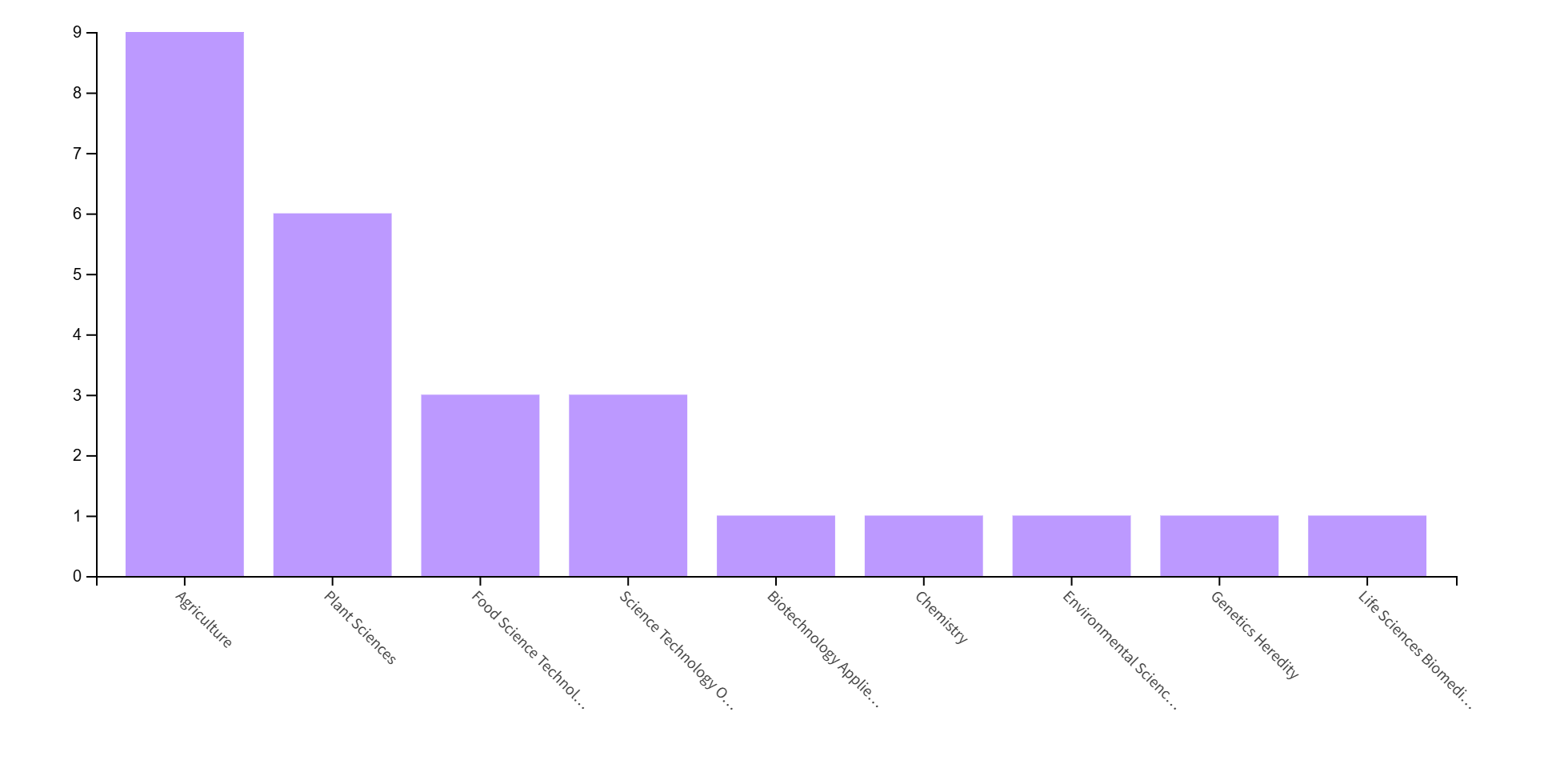
Types of published documents:
| Types | Record Count | % of 20 |
|---|---|---|
| Article | 16 | 80.000% |
| Review Article | 4 | 20.000% |
| Data Paper | 1 | 5.000% |
Authors’ infographic:
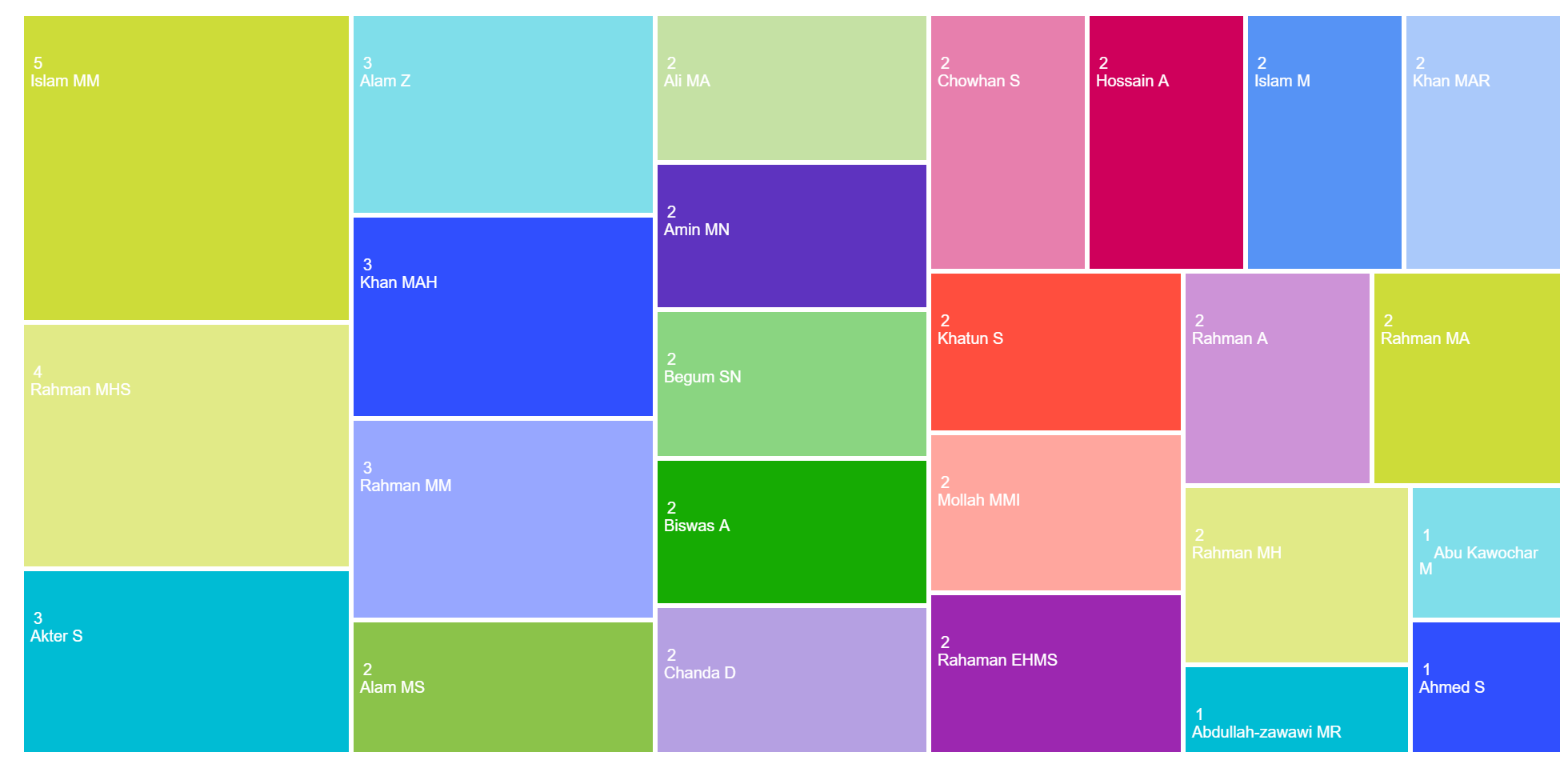
Researcher profiles (Leading 25):
| Researcher | Record Count | % of 20 |
|---|---|---|
| AKTER, SANJIDA | 3 | 15.000% |
| Rahman, Md. Hasan Sofiur | 3 | 15.000% |
| Alam, Zakaria | 3 | 15.000% |
| Khatun, Soyema | 2 | 10.000% |
| Rahaman, E. H. M. Shofiur | 2 | 10.000% |
| Hossain, Akbar | 2 | 10.000% |
| Amin, Md Nurul | 2 | 10.000% |
| Rahman, Md. Habibur | 2 | 10.000% |
| Chowhan, Sushan | 2 | 10.000% |
| Begum, Shamsun Nahar | 2 | 10.000% |
| Rahman, Atiqur | 2 | 10.000% |
| Mollah, Md Mahi Imam | 2 | 10.000% |
| Khan, Md Abdullah Al Mamun | 2 | 10.000% |
| Ali, Mir Aszad | 2 | 10.000% |
| Islam, Majharul | 2 | 10.000% |
| Khan, Md Akhtaruzzaman | 2 | 10.000% |
| Chanda, Debashish | 2 | 10.000% |
| Islam, Md. Nahidul | 1 | 5.000% |
| Li, Kuikui | 1 | 5.000% |
| Islam, Aminul | 1 | 5.000% |
| Tran, Lam-Son | 1 | 5.000% |
| Skalicky, Milan | 1 | 5.000% |
| Jahangir, Mohammad MR | 1 | 5.000% |
| Frei, Michael | 1 | 5.000% |
| Tahjib-Ul-Arif, Md. | 1 | 5.000% |
Research affiliations of BINA with other universities and institutes:
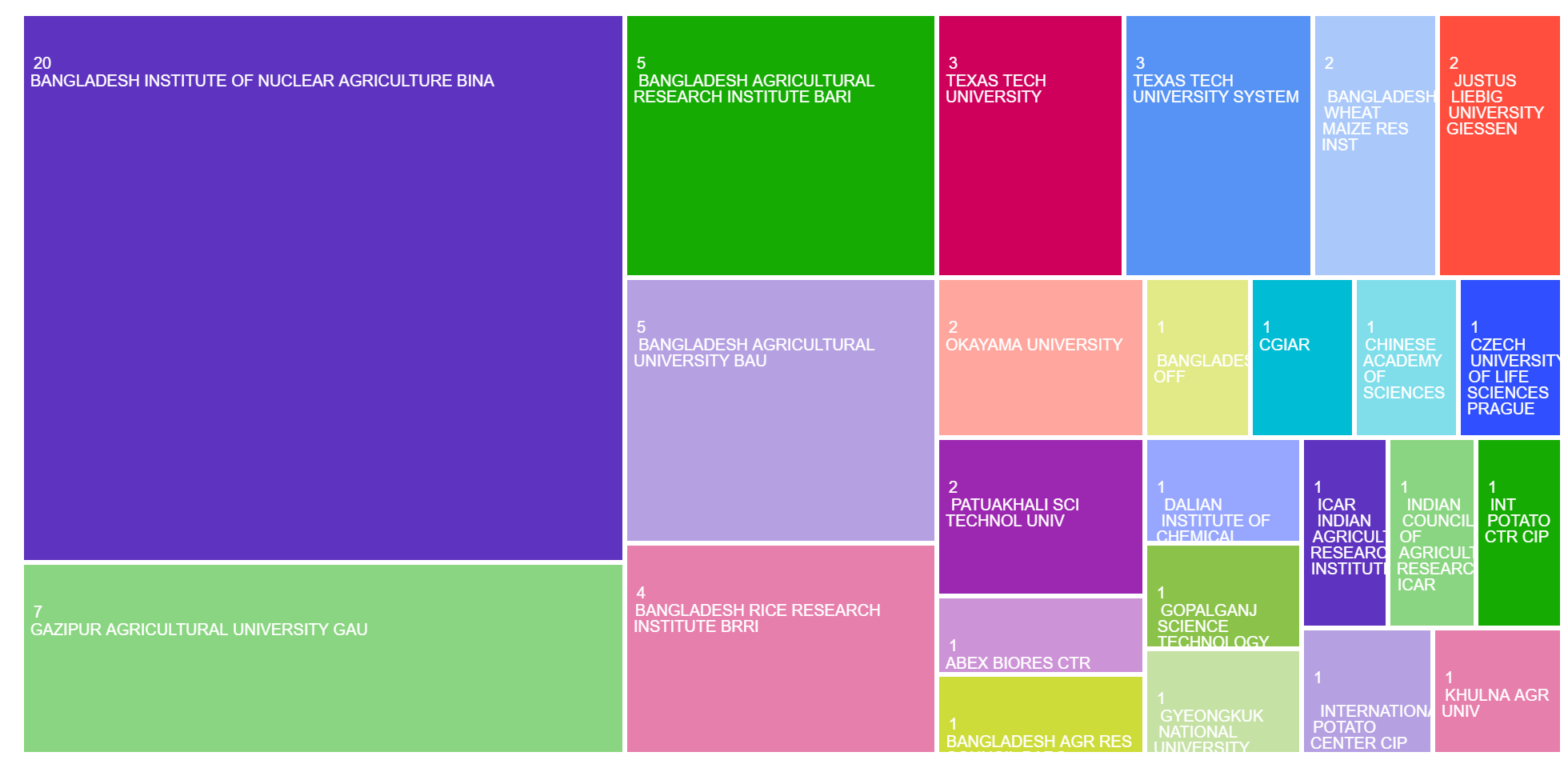
Research collaboration countries:
| Countries/Regions | Record Count | % of 20 |
|---|---|---|
| Bangladesh | 20 | 100.000% |
| Usa | 5 | 25.000% |
| Japan | 3 | 15.000% |
| Germany | 2 | 10.000% |
| India | 2 | 10.000% |
| Czech Republic | 1 | 5.000% |
| Malaysia | 1 | 5.000% |
| Peoples R China | 1 | 5.000% |
| Scotland | 1 | 5.000% |
| South Korea | 1 | 5.000% |
Sustainable development goals:
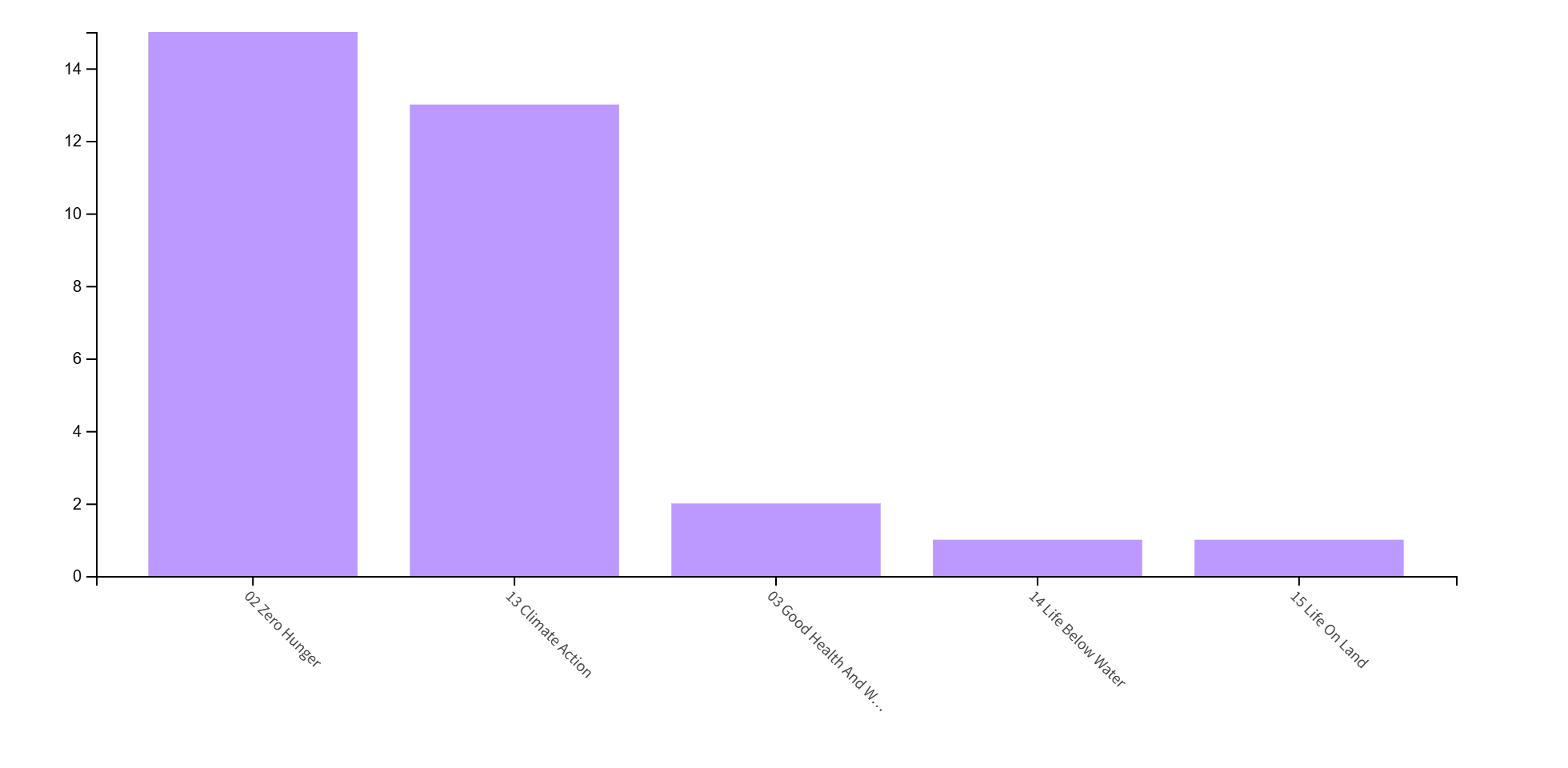
The publishers:
-
Elsevier – 9 (45.000%)
-
Springer Nature – 2 (10.000%)
-
Agricultural Research Communication Centre – 1 (5.000%)
-
Cabi Publishing – 1 (5.000%)
-
Cambridge Univ Press – 1 (5.000%)
-
Frontiers Media Sa – 1 (5.000%)
-
Inst Bioloska Istrazivanja Sinisa Stankovic – 1 (5.000%)
-
Japanese Soc Plant Cell & Molecular Biology – 1 (5.000%)
-
Mdpi – 1 (5.000%)
-
Polskie Towarzystwo Botaniczne – 1 (5.000%)
-
Public Library Science – 1 (5.000%)
Web of Science Index:
| Index | Record Count | % of 20 |
|---|---|---|
| Science Citation Index Expanded (SCI-EXPANDED) | 14 | 70.000% |
| Emerging Sources Citation Index (ESCI) | 6 | 30.000% |
Funding Agencies:
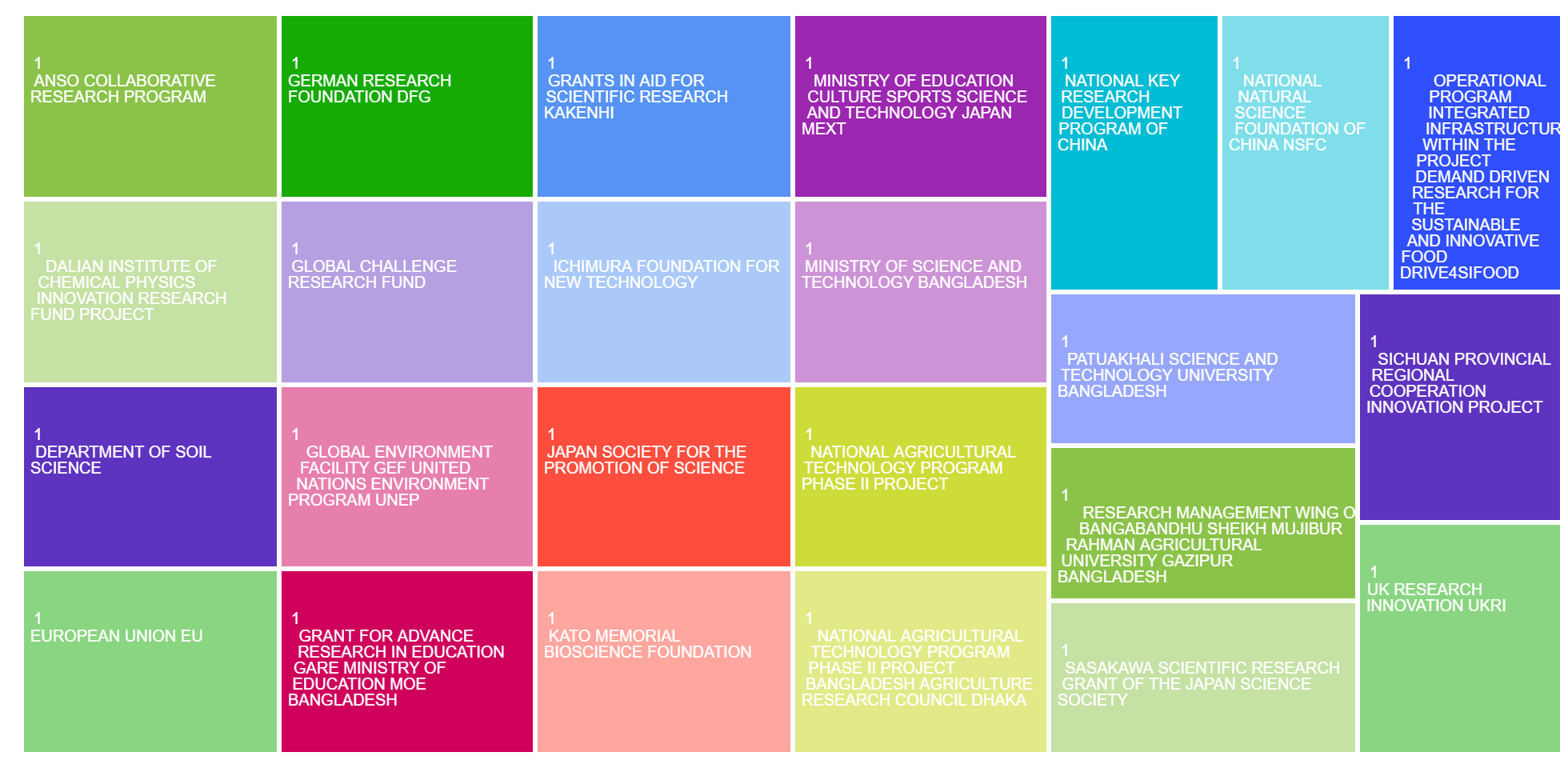
Research Highlights of BINA:
| Type | Result |
|---|---|
| Review Article | 4 |
| Open Access | 16 |
| Enriched Cited References | 10 |
Observations:
-
BINA’s research in 2024 was highly concentrated in the agricultural and plant sciences domain, reflecting its institutional mandate.
-
International collaboration, though secondary to national contributions, added value and visibility to the publications.
-
The dominance of Elsevier as a publisher suggests a preference for high-impact, globally recognized journals.
Questions:
-
What strategies did BINA implement in 2024 to achieve this level of research output and visibility?
-
How can BINA further enhance its presence in multidisciplinary and high-impact international collaborations?
-
What are the long-term impacts of this research on agricultural development and food security in Bangladesh?
BINA’s 2024 publication profile reflects a focused, collaborative, and steadily internationalizing research culture, showing both academic strength and potential for greater global scientific integration.

